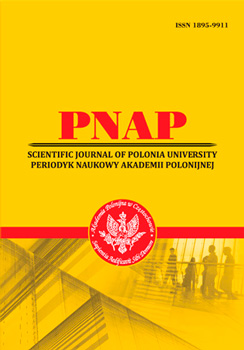FOLD AS A MODEL OF EKPHRASIS IN CONTEMPORARY ESSAYS ON THE VISUAL ARTS (BASED ON THE ANALYSIS OF ENGLISH ESSAYS)
Abstract
The article addresses the complex nature of ekphrasis as the verbal representation of the works of the visual arts and discusses its explications through the prism of various metaphorical models. With the metaphors of the paragone and the sister arts acknowledged as the two powerful models of ekphrasis, a recently introduced metaphor of ekphrasis as a fold is given a close look. The roots of the fold as a metaphorical model are traced back to works of Gottfried Wilhelm Leibniz and further philosophical elaboration of this model in Gilles Deleuze’s writings is discussed. It is argued that viewing ekphrasis as a fold makes it possible to capture the nature of ekphrasis in contemporary essays on the visual arts as a means of producing meanings through interpretation of the existing meanings and thus as a means of perpetuating culture. This argument is supported with the cognitive poetic analysis of ekphrasis in John Berger’s essays on the visual arts.
References
2. Berger, J. (2015). Portraits: John Berger on artists. Overton, T. (Ed.). London, New York: Verso.
3. Bugno-Narecka, D. (2017). Blurring the Boundaries: Ekphrasis as a Fold. Alteria, Belo Horizonte, 27(2), 97‒111.
4. Bugno-Narecka, D. (2020). Ekphrastic Historiographic Metafiction – Enfolding World, Image and History. Lublin Studies in Modern Languages and Literature, 44(2), 3‒13.
5. Deleuze, G. (1991). The Fold. Yale French Studies, 80. Baroque Topographies: Literature/ History/ Philosophy, 227-247. transl. from French by Strauss, J.
6. Harvey, J. (2002) ut pictura poesis. The university of Chicago: Theories of Media: Keywords Glossary. Retrieved from https://csmt.uchicago.edu/glossary2004/utpicturapoesis.htm
7. Heffernan, J. A.W. (1991). Ekphrasis and Representation. New Literary History, 22 (2), 297‒316.
8. Humar, M. (2021). Metaphors as models: Towards a typology of metaphor in ancient science. History and Philosophy of the Life Sciences, 43, 101. Retrieved from https://link.springer.com/ article/10.1007/s40656-021-00450-2#citeas
9. Lakoff, G., Johnson, M. (1980). Metaphors We Live By. Chicago and London: The University of Chicago Press.
10. Piero della Francesca. Encyclopaedia Britannica. Retrieved from: https://www.britannica. com/biography/Piero-della-Francesca
11. scientific modelling. Encyclopaedia Britannica. Retrieved from https://www.britannica. com/science/scientific-modeling
12. Seppi, A. (2016). Simply Complicated: Thinking in Folds. In Friedman, M., Schäffner, W. (Eds.). On Folding: Towards a New Field of Interdisciplinary Research. Bielefeld: Transcript Verlag, 2016. (pp. 49‒76).
13. Spitzer, L. (1955). The “Ode on a Grecian Urn,” or Content vs. Metagrammar. Comparative Literature, 7 (3), 203‒225.
14. Vincent van Gogh. Encyclopaedia Britannica. Retrieved from https://www.britannica.com/ biography/Vincent-van-Gogh.
Abstract views: 285 PDF Downloads: 184







